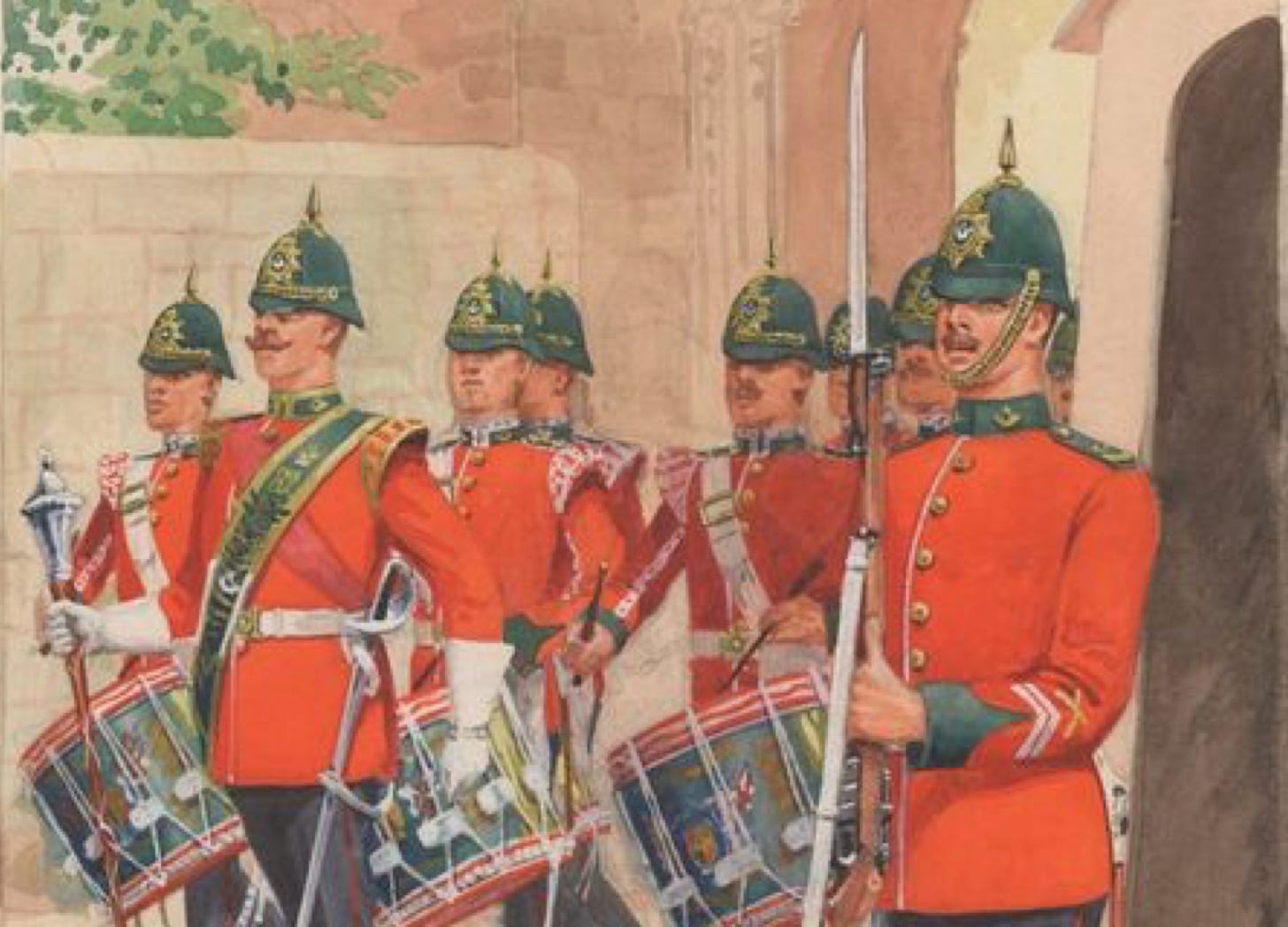This post continues the serialization of Battalion Organization, an article, published in 1912, in the Journal of the Royal United Service Institution, that argued for the replacement of the traditional eight-company battalion with a unit made up of four much larger companies. A copy of the original article can be found here, at the Military Learning Library.
Links to earlier posts in this series can be found on the following page:
The Recruits of the Expeditionary Force and Acting Bandsmen and Drummers
We now come to two points which are not in any way connected with the system on which the battalion is organized, but nevertheless affects the efficiency of companies, whether they be eight or four. As regards recruits, what we should like for the whole army are the conditions which obtain at the Guards’ Depot at Caterham [south of London], whereby no recruit is allowed to leave the depot until he is actually fit to take his place in the ranks of his company. This result is produced in the maximum time of 16 weeks. Thus, in battalions of the Brigade of Guards there are no squads learning to salute on the barrack square. But this, unfortunately, is not the rule in the majority of Line Battalions, owing partly to the lack of accommodation at their depots, and partly to their inadequate staff of N.C.O.s.
We must therefore discover some alternative method for dealing with the incubus of the untrained recruit after he joins the battalion. This we propose to do, in a partial degree, by means of the Headquarter Section. A reference to the Appendix will show under the heading, “Peace Establishment. Proposed additions: Recruit Training and permanent employ four Sergeants, 50 Rank and File.” A portion of these N.C.O.s will be selected for their special aptitude for teaching barrack square drill and elementary musketry. Their particular duty will be to train such recruits as are not yet sufficiently instructed to join the ranks of their sections, and we shall thus avoid the withdrawal of section and squad commanders from their legitimate work.
As regards acting bands men and acting drummers, all of whom are taken out of the ranks of the companies, I think the time has come for facing a delicate problem, and on the whole my views coincide with those of Captain Scovell, as given in the October [1911] number of the Journal of this [the Royal United Services] Institution. But, as he has not suggested a remedy for the evil, I will venture upon a proposal.
We infantry soldiers look upon the Drum and Fife (or Pipe or Bugle) band as of the very essence of soldiering. No old soldier can hear it unmoved. We want to hear it constantly in peace and in war, but its authorized establishment must certainly be in-creased, say to 30 of all ranks including boys. No acting drummer should then be permitted.
The Brass Band is a different story. Its authorized establishment is 21, but no good music can be produced by this number, which is usually inflated to over 50 by stealing men from the companies, and calling them acting bandsmen. We thus have over 7,000 men in the British infantry employed in making music, in addition to the Drum and Fife Bands.
Can we afford it in these days—not so much from the point of view of money as oft he expenditure of men? Would it not be wiser and more economical to substitute for these 146 infantry bands a much smaller number of permanent stationary bands, en-listed as musicians only, in our various military garrisons? The officers and men would hear them oftener than they do the existing ones, which are perpetually absent fulfilling civilian engagements. How would it be to attach to the headquarters of every division a magnificent band of 60 musicians, and allow traveling expenses for out-stations under certain limitations?
The series concludes with the following post:
For Further Reading:
To Subscribe, Support, or Share:











